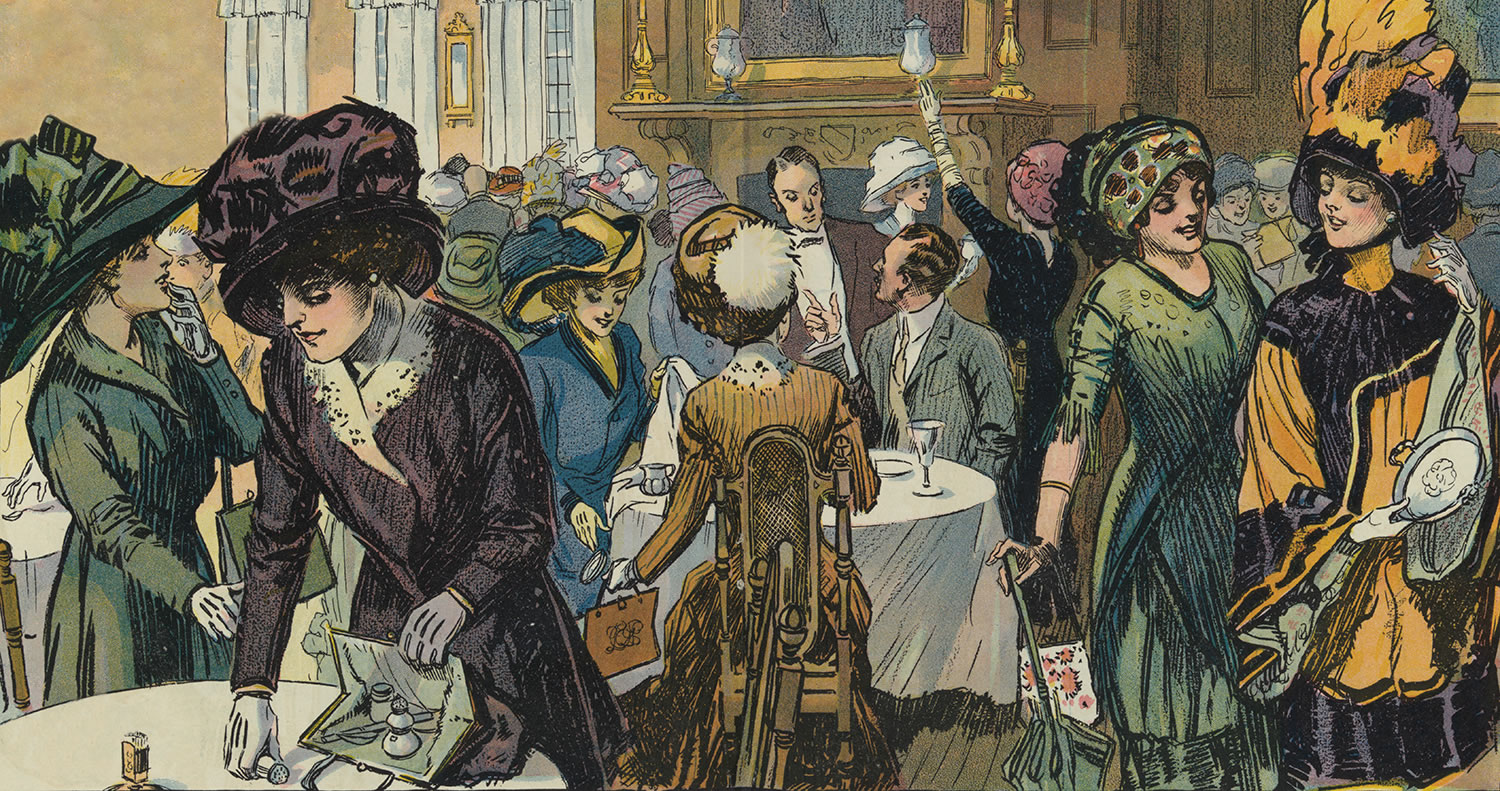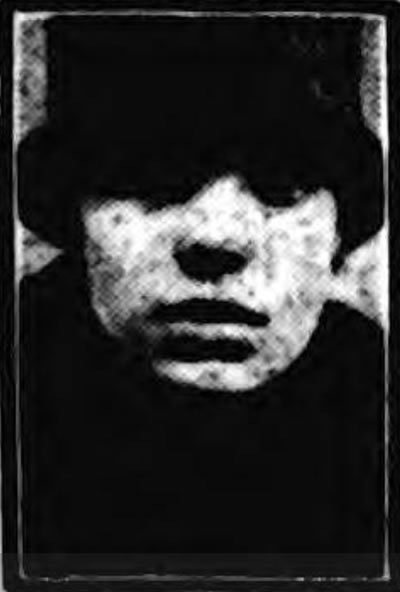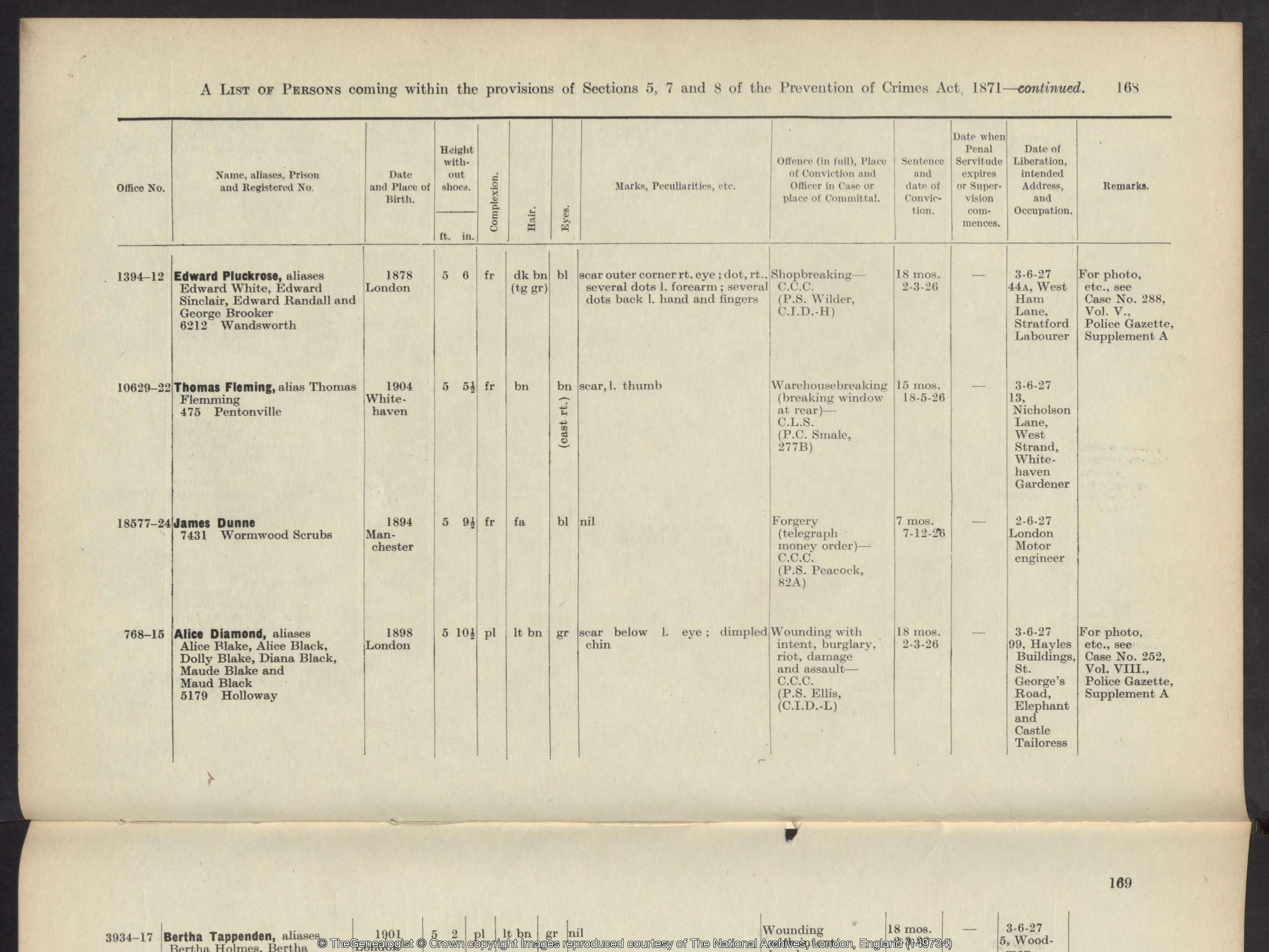In the 19th and early 20th century a notorious all-female crime syndicate known as the Forty Thieves operated out of the slums of south London specialising in shoplifting and bringing fear to the streets. This gang was remarkable not only for being made up of females but also for the length of time that it was in operation. Their deftness in avoiding being caught is legendary, but a look at MEPO 6 (Metropolitan Police: Criminal Record Office: Habitual Criminals Registers and Miscellaneous Papers) on TheGenealogist tells us that they did not always get away.
The Forty Thieves, or Forty Elephants as they were also called, are mentioned in police reports all the way back to
the 1870s. In 1896 their leader at the time, Minnie Chamberlain, aka Kelly (and a number of other aliases), was
committed to Wormwood Scrubs for 12 months having been convicted of larceny. We see in the record for this on
TheGenealogist, that she was even identified in the register record as Queen of the Forties
.

The name Forty Elephants was probably given to the gang after the landmark of the Elephant and Castle statue in the area which was considered to be their home turf, the Lambeth area of south London. However, there are at least two other stories regarding their nickname. One was that it was simply word-play with ‘elephant’ being substituted for ‘elegant’, as they were always well turned out. Yet another story is that it referred to the way many of the women looked when they came out of a store, loaded down with their ill gotten gains.
The main crime that the women specialised in was shoplifting carried out in groups. They would normally dress up to look like upper class socialites as ladies in smart clothes were less likely to be questioned, much less searched in those days. Their long skirts with bustles allowed them to have hidden compartments to conceal stolen goods as well using hats and muffs to secrete looted items.
Another unlawful activity, that the gang was known for, was to gain employment as housemaids in target homes, having used false references to get employed in the first place. Once they were established in the house they would then call up other members of their group to help clean out the premises of its valuables.

Alice Diamond: The Queen in the 1915s
The Forty Elephants was not just made up of women, it was also run by a woman at its head. As we have seen, from the
early criminal register, Minnie Chamberlain was referred to as the Queen of the Forties
as she would have had
absolute authority in the gang. By the time of the early 20th century, the position of “Queen” had then passed to a
20-year old woman named Alice Diamond. The daughter of Thomas Diamond, a petty criminal, she had been born in the
Lambeth Workhouse Hospital. Her father had at least three criminal convictions to his name, including one for
assault on the son of the Lord Mayor of London at a political meeting where he put the victim’s head through a pane
of glass in a door and severely injured him.

‘Diamond Annie’, as Alice was also known, was physically strong but also clever and a skilful organiser. She wore diamond rings on her hands which would do a lot of damage to anyone that she hit as she had a powerful punch; but it was her brains that were the reason for her being the leader. As the heat in London became too much for her group she spread her criminal enterprise to the provinces targeting stores as far away as Coventry and Liverpool and using motorcars to travel.
Access Over a Billion Records
Try a four-month Diamond subscription and we’ll apply a lifetime discount making it just £44.95 (standard price £64.95). You’ll gain access to all of our exclusive record collections and unique search tools (Along with Censuses, BMDs, Wills and more), providing you with the best resources online to discover your family history story.
We’ll also give you a free 12-month subscription to Discover Your Ancestors online magazine (worth £24.99), so you can read more great Family History research articles like this!
Alice Diamond’s criminal career had started around 1912 the year when she was cautioned, along with Mary Austin, for
stealing chocolate. Her accomplice, Mary, would later marry north London racing gangster Frederick Sabini. ‘Diamond
Annie’, on the other hand, never married, though she did have a relationship with Bert McDonald, one of the leaders
of the all-male Elephant Gang, the male crime group that operated in the area. In 1915 she was named by police and
newspapers as Queen of the Forty Thieves
, having succeeded Mary ‘Polly’ Carr, who had previously held
the title.
Battle of Lambeth
The Queen of Forty Thieves, like the real monarch with her close family, insisted that her girls sought her permission to marry. Alice kept a close watch on who her girls engaged with and her approval was required before they started any relationship. The man that they were involved with had to be reliable because it would be inevitable that he would find out things that the gang was up to. In 1925, one of the members married a man in spite of disapproval by Alice Diamond. The union resulted in what is known as the Battle of Lambeth when Alice and Maggie, Alice’s chief lieutenant (the volatile and violent Maggie Hill), led the attack on the newly married couple. There ensued a large disturbance when the Forty Elephants brawled with police and both Alice and Maggie landed in jail. We can consult the MEPO 6 records on TheGenealogist to find her entry for around this time.

Alice Diamond (alias Alice Blake, Alice Black, Dolly Blake, Diana Black, Maude Blake and Maud Black) was sent to Holloway prison for 18 months. Her offences were extensive, namely wounding with intent, burglary, riot, damage and assault!
On her release in June 1926, as required, she gave the authorities the address where she intended to reside as 99 Hayles Buildings, St George’s Road, Elephant and Castle. Her occupation was recorded to be as a Tailoress which sounds handy for creating secret pockets in her attire. In an earlier record from March 1923, when she spent 12 months in Holloway, it was claimed that she would be working as a laundry worker after her release.
A new Queen, Lillian Rose Kendall, eventually took charge but things could never get back to how they were in earlier times for the all-female gang. The Forty Elephants were active through the 1930s and World War II, but they had all but vanished by the 1950s.
TheGenealogist has an extensive Court and Criminal Records collection that can be used to discover wayward ancestors that include the MEPO 6 records. These particular records include Registers of Criminals as defined by sections 5-8 of the Prevention of Crimes Act 1871, with examples of Police Gazettes. Entries in the registers commonly provide the researcher with details of appearance, date of discharge from prison, the name of the prison, length of sentence and previous convictions.






